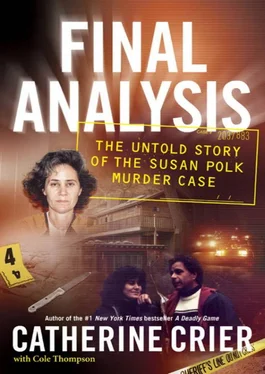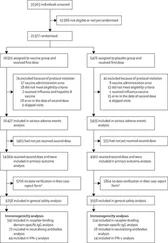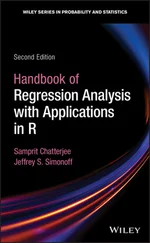As jury selection began, Susan seemed in control of her defense. Her questions were measured and appropriate, although in some instances she revealed too much about the specifics of her case and was admonished by the judge to restrict her comments. Soft-spoken and articulate, Susan’s demeanor was more of a schoolteacher than a murder defendant. She showed up for court each morning in well-tailored outfits, gold-rimmed designer glasses—and a uniformed court officer on each arm. Though she appeared self-assured at the start, it wasn’t long before it became clear that she was very nervous about her case and somewhat uncertain about how to proceed.
Late in the afternoon, Susan erupted into tears after a potential juror voiced alarm over the possible length of the trial, estimated at over two months, and Susan’s decision to serve as her own attorney—or to go pro per.
“I feel this is my one chance,” Susan defended, wiping tears from her cheeks. “I’m taking a calculated risk, and I realize all of you have things you’d rather do.”
In the courtroom, Susan was timid one minute and more like an articulate, thoughtful law student the next. She could be confident, emphatically arguing legal points with the judge and citing information from a law book. Other times, however, she was apologetic and ill at ease. She grew visibly upset one afternoon when she misplaced one of her documents. After Susan spent several anxious minutes rifling through the stack of papers on the defense table, she finally gave up in exasperation and carried on from memory.
By the end of the second day, Susan had dismissed eight prospective jurors while the prosecutor had dismissed six through the preemptory challenge process. Susan’s questioning made it clear that she was most anxious to have a juror who could be objective in adjudicating a case in which a defendant was acting as her own attorney.
While questioning one prospective juror, a building inspector, Susan crafted an analogy, asking him how he would react if he went to someone’s house and found that the homeowner had fixed his own toilet and done his own construction and wiring, while following the appropriate rules.
The man said that wouldn’t trouble him.
“And so, here in the courtroom, if I follow the rules, although I sometimes might make mistakes, would it annoy you that I’m doing it myself?”
“No. It wouldn’t annoy me,” he said.
Despite his positive responses, Susan would later strike the building inspector from the jury because of his friendships with a local judge and members of law enforcement. She excused another potential juror after the woman told Judge Brady that she thought Susan “was a fool” for choosing to go pro per. And she let a third man go after he joked about her decision to represent herself.
“It’s like a game of wrestling, where a flyweight is with a heavyweight,” the retired draftsman chuckled. “If I bet on it, I bet with the heavyweight.”
While Susan took the courtroom proceedings seriously, she invoked a little humor when one prospective panelist raised concerns over how Susan intended to cross-examine her sons and take the stand on her own behalf. With a giggle, Susan recounted a scene from a Jim Carrey comedy in which the actor played a defendant who was representing himself, leaping from the podium to the stand as he conducted his cross-examination.
“I’ll actually have notes and questions for myself and an outline leading me through what I need to tell you,” Susan told the woman, a registered nurse, who was later selected to serve on Polk’s jury.
By late Monday, March 6, Susan and Paul Sequeria announced their agreement on a panel of six men and six women, among them a woman who had served in the U.S. military, a retired female U.S. Parcel Service worker, and a sales manager for the local plumber’s union who shared one attribute with Susan—a young son. The jury selection process had taken a full five days.
Judge Brady could have started the case with opening remarks that same afternoon, but at the request of the prosecutor, she agreed to begin the following day, March 7.
The case had drawn considerable attention from local and national media for a variety of reasons—the relationship between Susan and her therapist husband, the allegations of an abusive household, and the anticipated testimony from all three of the Polks sons—two were expected to testify against their mother and one was expected to take the stand on her behalf. The fact that Susan had fired four different defense attorneys and was now going to represent herself at trial made the case all the more interesting.
With people routinely questioning her sanity and judgment, the trial offered her an opportunity to prove the naysayers wrong and show that she could handle the task. Building from the material that Horowitz had prepared, she would present a straight self-defense case, alleging that Felix attacked her with a knife that October night and that she had fought back before fatally stabbing him to save herself. Furthermore, she would present evidence that Felix died from a heart attack—not the multiple stab wounds she inflicted during their heated altercation—and would call an expert to support her claim.
On Tuesday, members of the media, law enforcement, and curiosity seekers occupied most of the fifty seats in the gallery. Others sat on chairs that had been set up along the walls or stood in the rear of the courtroom, awaiting the opening remarks from Paul Sequeira and Susan Polk.
Susan looked drawn and frail as she stood organizing her papers at the defense table. Dressed in a white sweater and khaki pants, Susan’s sporty attire contrasted sharply with the conservative dark suit and solid gray tie worn by her opponent, Paul Sequeira. The prosecutor looked to be about ten years Susan’s junior, with thick, layered hair and wire-rim glasses that tended to perch on the end of his nose. Obviously comfortable in the courtroom, Sequeira made a habit of strolling across the commercial-grade carpet and sometimes leaning on the railing of the jury box.
Polk immediately surprised the crowd when she asked and was given permission to postpone her opening statement until she began her case-in-chief. It was just after 3 PM when the prosecutor rose to address the jury. He told Judge Brady that his remarks would take about fifty minutes to deliver, but in reality the remarks took a lot longer, as Sequeira was interrupted repeatedly by Susan’s objections.
“You are about to embark on a journey through a dysfunctional relationship that ended in murder and destruction,” the prosecutor began. “Felix Polk was a Holocaust survivor. Susan was fifteen when she went to see him. They had a relationship that went wrong. The physical relationship began when she was seventeen or eighteen. They married when she was twenty-four and had their first son, Adam, in 1983. What was born out of dysfunction began to look like a normal, loving relationship.
“The defendant worked in the home raising children, but there were always conflicts. Wherever Susan went, there was a trail of conflict and confrontation. If there were problems in school, it was the teacher’s fault. This also became the children’s reality because it was easier to go along than to take responsibility for their actions.
“Susan also had a theory that Felix controlled the school. Gabe admits that he was sucked into this delusion. As time passed, Susan became more paranoid and began making things up. Then, five years before the murder, Susan’s mental instability intensified on a trip to Disneyland. She had a full-blown break and claimed to have repressed memories. She claimed she was raped as a child by her father and brother, and described in graphic detail the rape scenes to her children.”
Читать дальше











